6 Types of Swimming Goggles – And Which to Choose (With Pictures)
Last Updated on
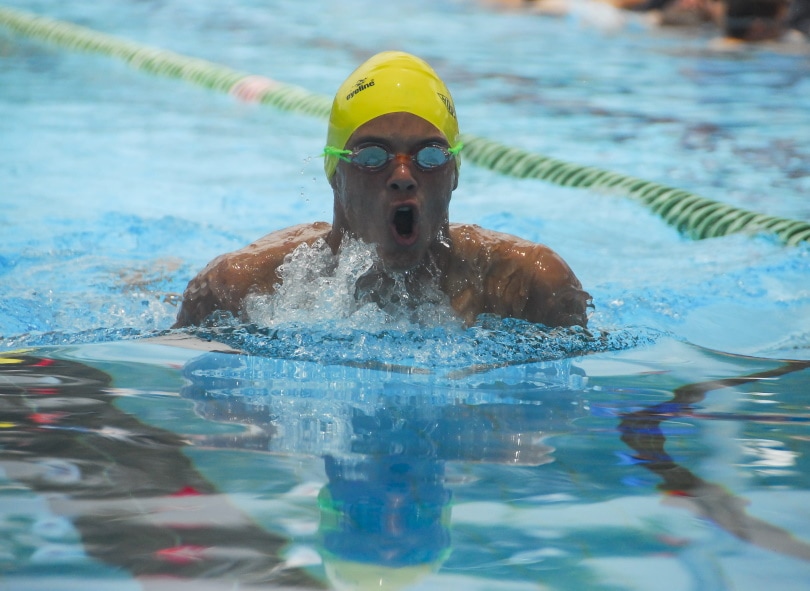
Whether you’re a professional athlete or just taking a dip in the ocean, swimming goggles are the essential item for making underwater activities a breeze. Here, we’ll show you the many kinds of masks you can get for different situations, as well as some additional information that’ll guide you towards the right decision for your needs. However, you’ll definitely want to try them on in person if you are going to get some to make sure they work properly.

Before We Start
Remember that price, fit, comfort, and other factors may affect your options. As a precursor, you may want to measure from the back of your head to the front to see what size range is appropriate. The same could be said for the eyecups, although this is much easier to find out in person.
Also, there are special coatings that help with preventing fog or the goggles may include polarization for glare. This can impact the usefulness in certain scenarios and make things more enjoyable overall.
When it comes to lens care, don’t wipe the inside of your goggle lenses with your fingers, as this will damage the coatings and break them down faster. Still, there are some ways to clean them, such as lens cleaning fluids or using saliva if you are willing to deal with that. Also, use only microfiber cloths or soft materials made for glasses or goggle lenses to ensure that you’re careful with those coatings, and never use paper towels or abrasive tissues.
The 6 Types of Swimming Goggles
1. Recreational

For people who want to have a good time at the lake in the summertime, recreational goggles are the obvious choice since they’re widely available at most sporting goods stores or supermarkets. Of course, they don’t provide the same level of speed that competitive goggles would, but they’re affordable and pleasant to use.
Generally, they consist of a rubberized or silicone strap, and there should be options with polarization or anti-fog as they’re primarily for outdoor swimming. There are some variations that are shaped similarly to a diving mask because they have a flat profile and might have material that covers the nose.
- Inexpensive
- Comfortable
- Availability in stores
- Not aerodynamic
2. Competitive
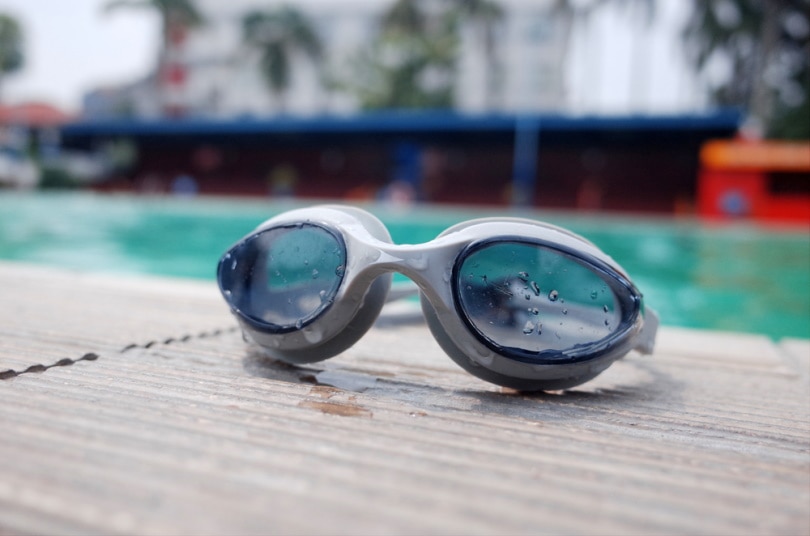
Those that perform in a professional sports setting should have a pair of competitive goggles because of their highly aerodynamic design that reduces drag, enabling the user to increase their speed in the water.
The majority of these have an anti-fog feature to minimize the moisture that seeps inside the lenses. Plus, they prioritize a wide field of view so athletes can see their surroundings. However, they do cost more money than other kinds of goggles, so they aren’t for the average person.
They also don’t provide the same level of comfort since they’ve got less material on the outer frame. One thing to note is that if you plan on doing professional races, we recommend owning at least two pairs of goggles in the event that one fails.
- Aerodynamic
- Visibility
- Expensive
- Uncomfortable
3. Practice
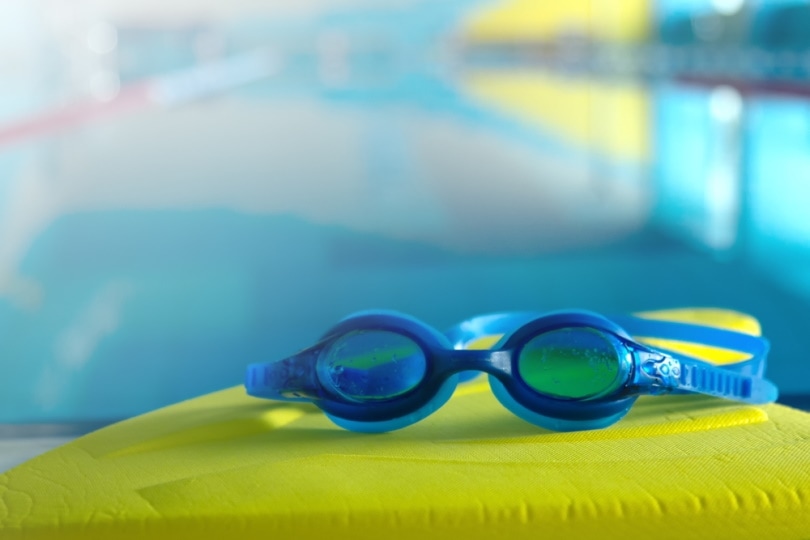
For basic use, you’ll want a pair of training goggles. They compare similarly to competitive goggles but don’t have the same level of drag resistance. Practice lenses are shaped the same way as their professional counterparts but still can be used as a less-expensive alternative if you aren’t too serious about winning medals. Yet, they can have a slightly larger eyepiece size and have a narrower field of view.
Like competitive goggles, they should have a silicone strap to hold a good grip on your head and may have polarization or UV coatings as well.
- Affordable
- Availability in stores
- Some drag
- Large
4. Diving Masks
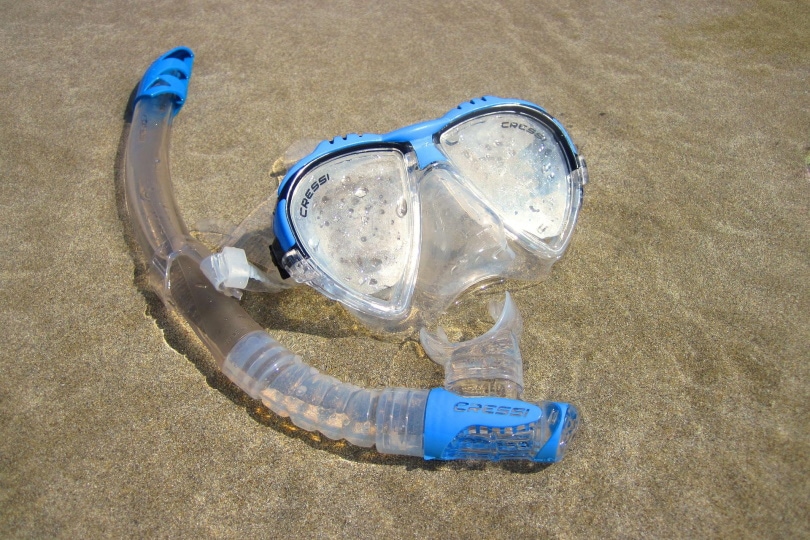
Instead of calling them goggles, most people refer to these as masks because they cover the most area. They are used for scuba diving, which deals with more water pressure and depth than the others on this list.
True diving masks have a nose covering, in which case they support full sealing to prevent unwanted water consumption. Since they are large, heavy, and have a flat profile, they aren’t great for swimming fast because the water constantly drags across the lens area. They aren’t cheap, though, and they can cost hundreds of dollars. However, it’s for good reason because they’ve got amazing suction capabilities and are a lifeline for water safety.
- Excellent sealing
- Comfortable
- Nose cover
- Not aerodynamic
- Expensive
5. Full-Face Snorkeling Mask

Not to be confused with diving masks, this snorkeling style of goggle has a unique teardrop shape to contour the eyes, nose, and mouth so that air can travel into its integrated airflow tube. People who record footage with their action cameras are going to love this kind because they often come with an included mount for your device or enough space to put an attachment on top. Additionally, full-face masks contain small vents inside the mask to maximize air circulation.
However, they do lack an aerodynamic design and may cost more than our other choices. They’ve also got the same level of drag, if not more, than diving masks because there is a large, one-piece lens to cover the entire face. One thing to keep in mind is that they can only be used close to the surface of the water, as you’ll have to constantly go up to get more air.
- Good for action cameras
- Detachable snorkel
- Ventilation
- Expensive
- Not aerodynamic
- Difficult to put on
6. Swedish
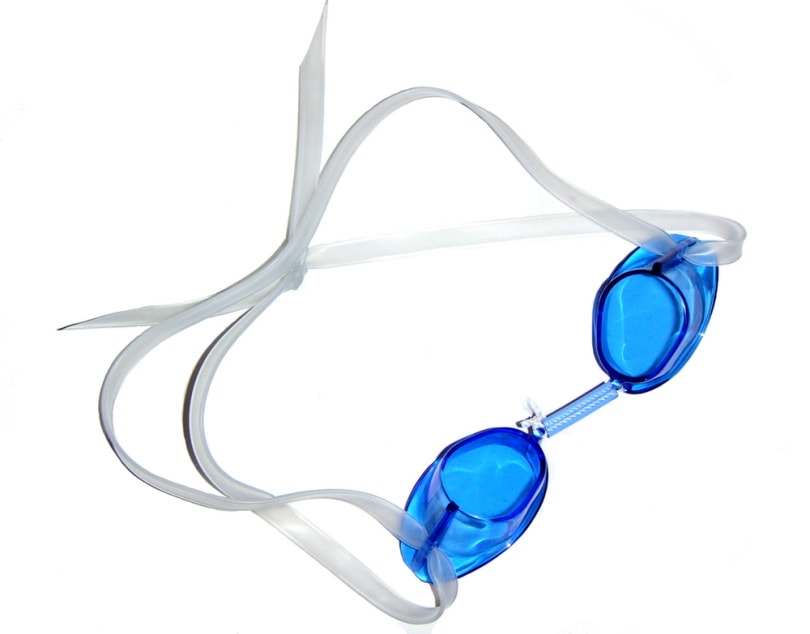
As the goggles that provide the least amount of coverage, Swedish-style lenses can be budget-friendly and are always barebones. They don’t have a good deal of coverage and can be prone to leakage if you don’t fit them correctly.
Still, if sized the right way, they can provide a snug fit, and a lot of Swedish goggles incorporate a UV-coated layer for outdoor use. This helps to block out harmful sunlight that can damage the eyes if not properly protected. Like the athletic goggles we mentioned earlier, they have an extremely wide field of view because their frames are so minimal.
- Can be affordable
- Aerodynamic
- Simple
- UV coating
- Odd fit
- Not comfortable
- Poor seal

Final Thoughts
If you’re looking to get a new pair of swimming goggles, the best thing to do is try them out yourself. Doing so will make your water-related experiences much more satisfying, and you’ll be able to swim confidently.
Our goal was to give you the resources necessary to lead you to grab the right type of goggles for whichever activity you love. Enjoy the underwater exploration, summer fun, and racing thrills that make swimming so fun!
- See also: When Were Swimming Goggles Invented?
Featured Image Credit: Piqsels
About the Author Robert Sparks
Robert’s obsession with all things optical started early in life, when his optician father would bring home prototypes for Robert to play with. Nowadays, Robert is dedicated to helping others find the right optics for their needs. His hobbies include astronomy, astrophysics, and model building. Originally from Newark, NJ, he resides in Santa Fe, New Mexico, where the nighttime skies are filled with glittering stars.
Related Articles:
Monocular vs Telescope: Differences Explained (With Pictures)
How to Clean a Refractor Telescope: Step-by-Step Guide
How to Clean a Telescope Eyepiece: Step-by-Step Guide
How to Clean a Rifle Scope: 8 Expert Tips
What Is a Monocular Used For? 8 Common Functions
How to Clean a Telescope Mirror: 8 Expert Tips
Brightfield vs Phase Contrast Microscopy: The Differences Explained
SkyCamHD Drone Review: Pros, Cons, FAQ, & Verdict
